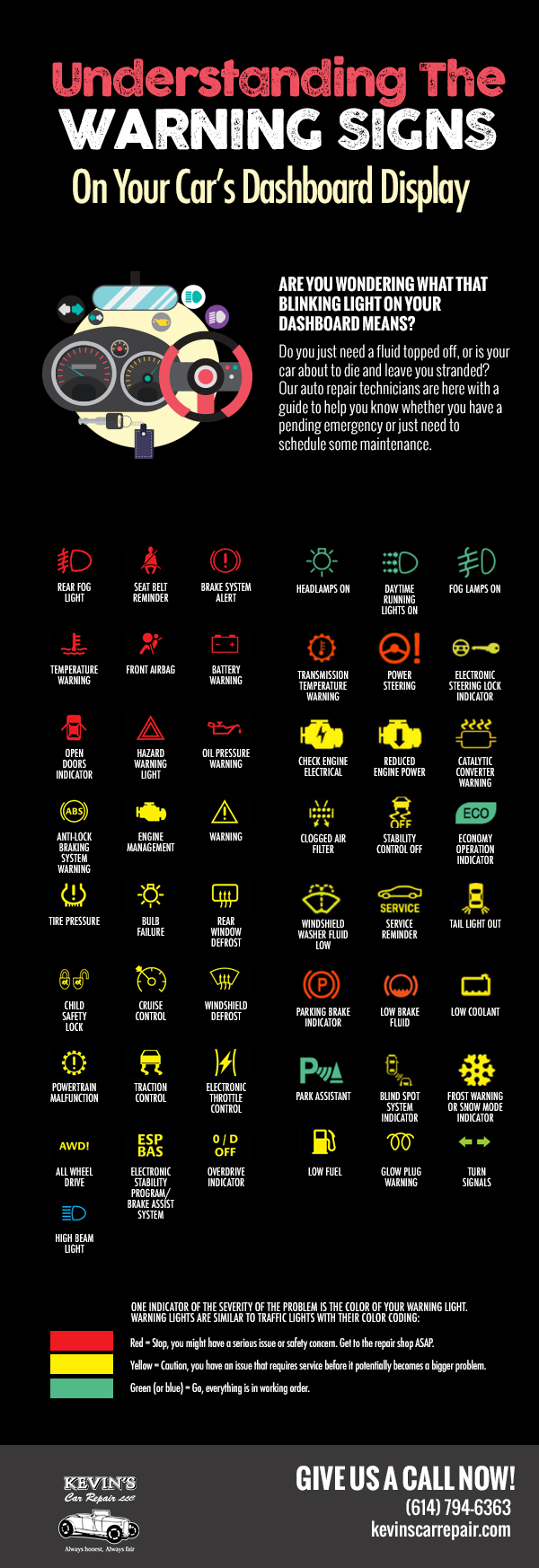Understanding The Importance Of Your Car'S Warning Signals: What They In Fact Stand For
Understanding The Importance Of Your Car'S Warning Signals: What They In Fact Stand For
Blog Article
Short Article Composed By-Boye Kejser
When you're behind the wheel, those radiant caution lights on your dashboard can be a little bit perplexing. Do you know what they're attempting to tell you regarding your auto's health and wellness? Comprehending the value of these lights is essential for your security and the longevity of your automobile. So, the following time among those lights appears, wouldn't you want to decipher its message properly and take the required actions to resolve it?
Common Caution Lights and Interpretations
Recognize common caution lights in your auto and comprehend their significances to guarantee secure driving.
One of the most regular warning lights consist of the check engine light, which indicates concerns with the engine or emissions system. If this light begins, it's important to have your car checked quickly.
The oil pressure cautioning light indicates reduced oil pressure, calling for prompt focus to stop engine damages.
A flashing battery light could suggest a faulty billing system, possibly leaving you stranded if not addressed.
The tire pressure tracking system (TPMS) light notifies you to low tire pressure, impacting car stability and fuel efficiency. Overlooking this can cause hazardous driving conditions.
The abdominal light shows an issue with the anti-lock stopping system, endangering your capacity to stop rapidly in emergency situations.
Lastly, the coolant temperature warning light warns of engine overheating, which can lead to extreme damage if not fixed promptly.
Understanding these common warning lights will certainly help you attend to problems without delay and maintain risk-free driving problems.
Importance of Prompt Interest
Understanding the typical caution lights in your car is just the first step; the value of promptly addressing these warnings can't be stressed enough to ensure your safety and security on the road.
When a caution light brightens on your dashboard, it's your car's means of connecting a potential concern that requires attention. Ignoring these cautions can cause much more serious problems in the future, endangering your safety and possibly costing you a lot more in repairs.
Prompt focus to warning lights can protect against break downs and mishaps. As an example, a blinking check engine light could show a misfire that, if left ignored, could create damage to the catalytic converter. Resolving this promptly can save you from a pricey repair.
Likewise, a brake system warning light may signal low brake liquid or used brake pads, crucial elements for your safety and security when driving.
Do It Yourself Troubleshooting Tips
If you observe a caution light on your control panel, there are a few do it yourself troubleshooting tips you can try before seeking expert help.
The very first step is to consult your auto's handbook to understand what the certain warning light suggests. Often the concern can be as simple as a loose gas cap activating the check engine light. Tightening up please click the up coming document might fix the issue.
engine bay cleaning is a low battery, which can activate different alerting lights. Examining the battery connections for rust and guaranteeing they're protected may take care of the problem.
If a warning light continues, you can try resetting it by separating the automobile's battery for a couple of minutes and after that reconnecting it. In addition, inspecting your automobile's liquid levels, such as oil, coolant, and brake liquid, can aid fix advising lights connected to these systems.
Final thought
In conclusion, understanding your automobile's caution lights is crucial for maintaining your lorry running smoothly and securely. By without delay addressing these signals and recognizing what they mean, you can prevent pricey fixings and possible breakdowns.
Keep in mind to consult your cars and truck's guidebook for specific details on each warning light and act accordingly to ensure a hassle-free driving experience.
Keep notified, stay safe when driving!
